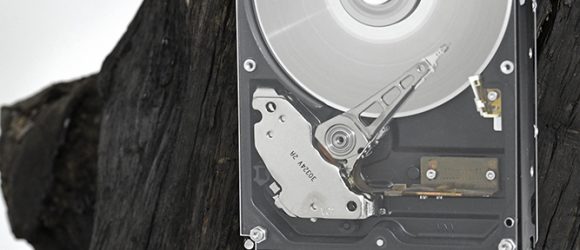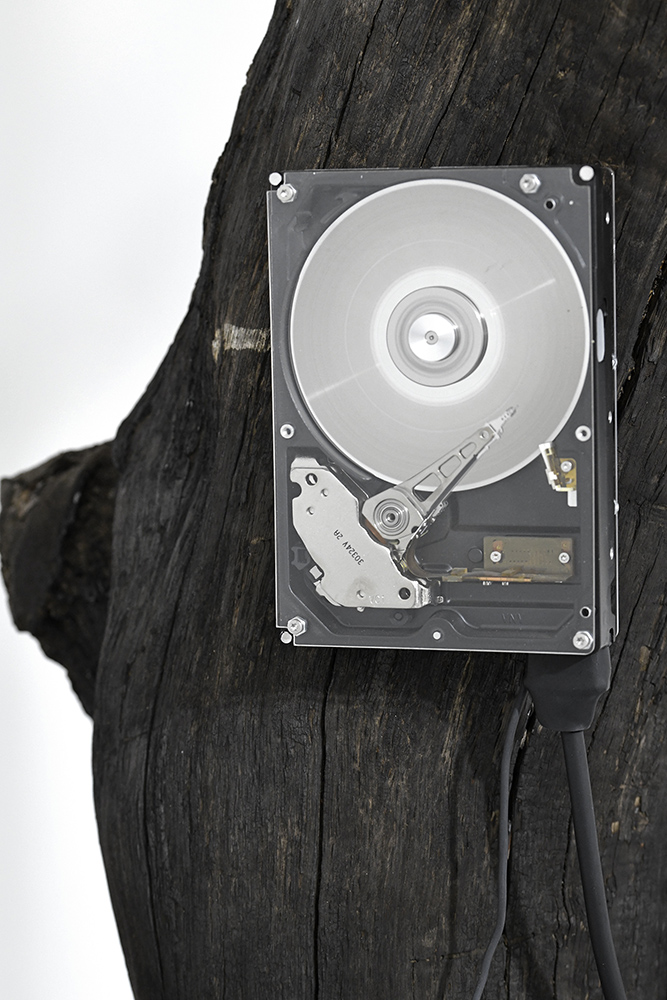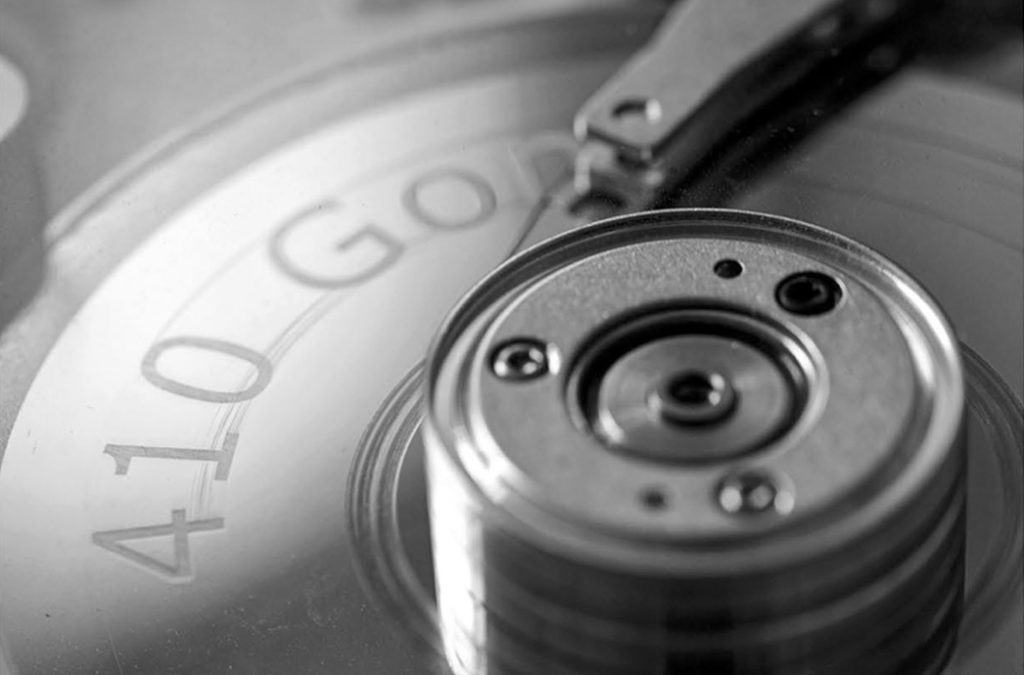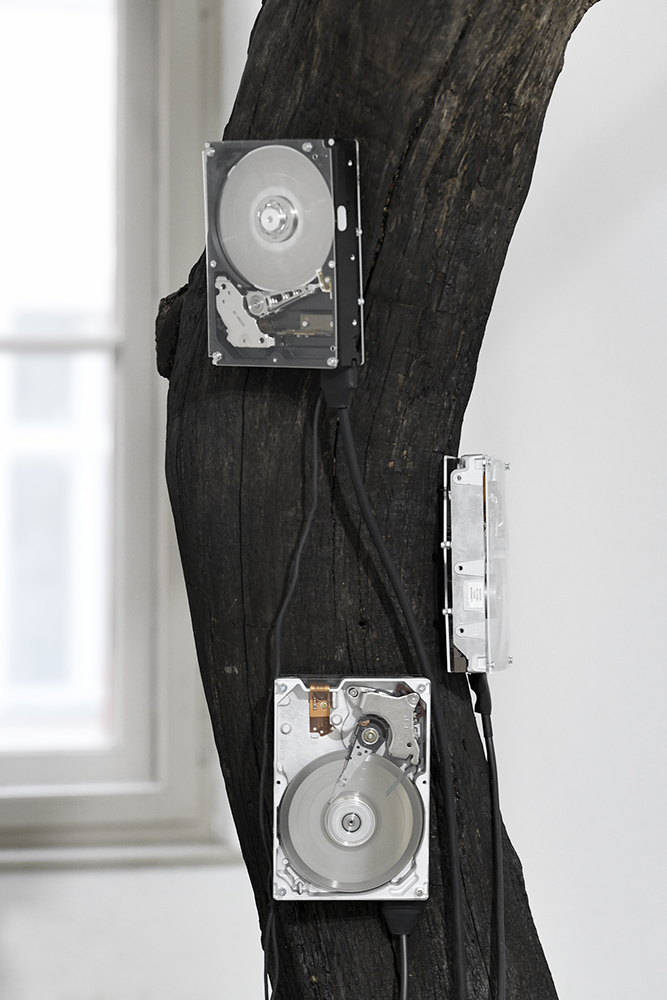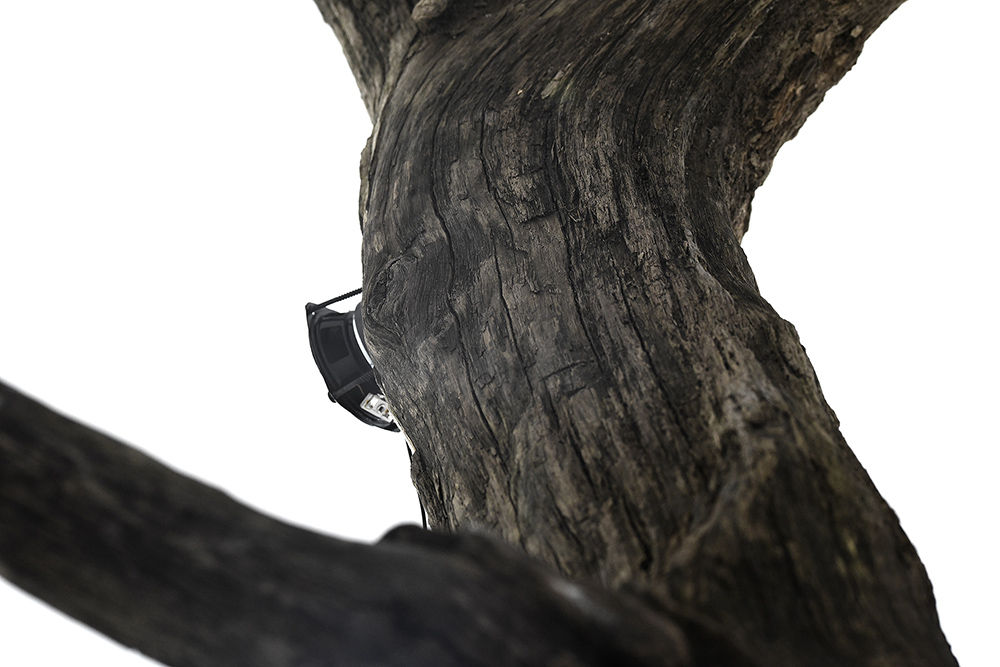Scanned_Image / 2015
The work “Scanned_Image” is a circuit of random technical events. Two scanners scan each other – each time in a different, random resolution and at a different point in time. Two webcams transmit the scanning process to the monitor, and the printer reproduces the image of the scanners’ encounter. An office lamp, which flickers along with the printing process, amplifies the visual noise. The last device in the chain is a shredder – you can take the produced image with you or destroy it immediately. Another element of the work is sound. Piezo and magnetic microphones attached to the technical devices collect the sounds and electrical fields they emit. The signals are amplified in different frequencies and intensities directly through twelve loudspeakers. Simultaneously, the sound is processed by software on the computer, which controls the office lights and creates a looping and feedback soundscape. The machines and devices operate in an independent, autonomous circuit, making the human factor obsolete. Humans can only take control by taking or destroying the resulting images of this automated process. However, the next image is always already in production. This materialization of images brings the process of remediation to another level. In the age of an overabundance of artificial images, it seems more interesting to focus on the underlying structure of their production than on their actual content. Therefore, the devices that were once called peripheral are now engaged in reciprocal communication, independently and self-sufficiently.
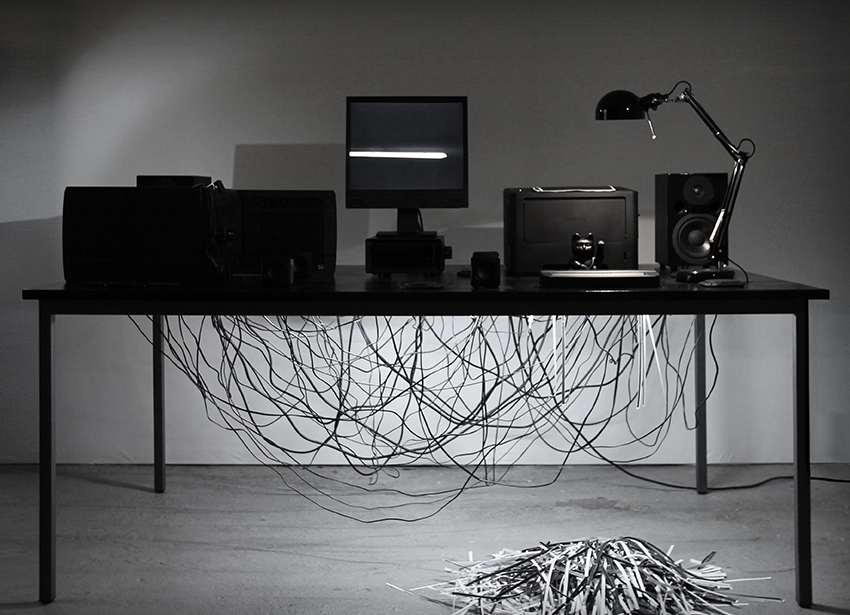
Scanned_Image / 2x scanner, 2x webcam, computer, printer, shredder, 2x amp, 11x speaker, Arduino, sound card / 2015
Scanned_Image / 2x scanner, 2x webcam / 2015
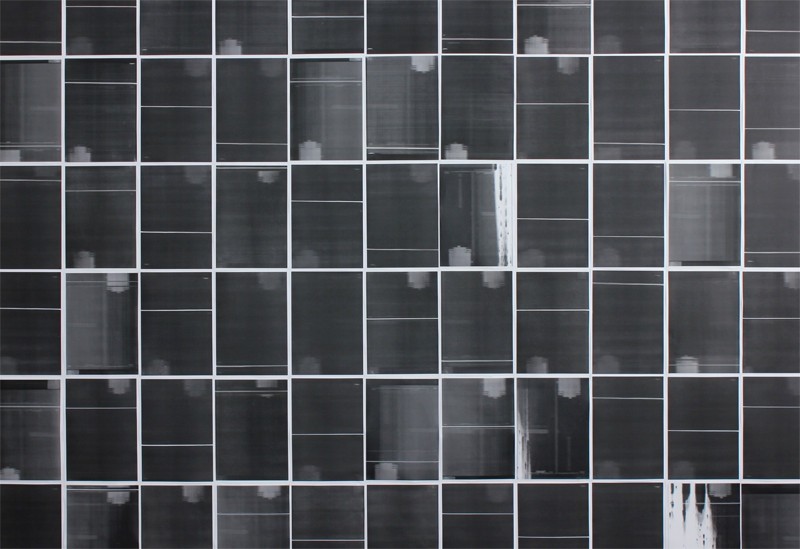
Scanned_Image / 77 random prints / 2015
Scanned_Image / Video documentation / 2015
Technical cooperation: Gösta Wellmer
Error 404 502 410 / 2019 – 2012
The project “Error 502 404 410” is a generative sound installation based on the phenomenon of server errors. Rarely noticed when they occur, these technical failures are accompanied by sounds. The discrete work of hard disk appliances becomes both an example of “reverse engineering” and an attempt at translation between media. The obscure realm of data noise is revealed and given an aesthetic frame by the artist’s scientific approach. As the disks rotate in an endless loop of self-reference, the recursion is not always regular because it is disturbed by the randomness factor.
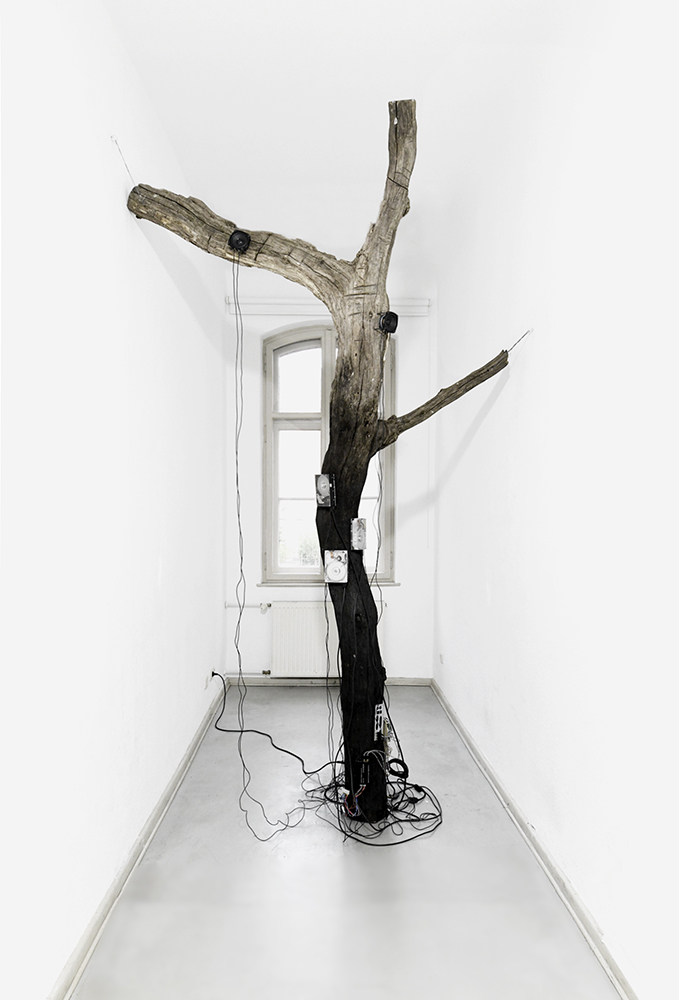
ERROR 404 502 410 / burned tree / 3 hard discs, acrylic glass, Arduino, DIY electronics, piezzos, speakers.
ERROR 404 502 410
ERROR 404 502 410 / close up
ERROR 404 502 410
 What do computer errors sound like? In our everyday use of computers error messages are communicated without sound. Most likely you are presented with matter-of-fact information like, “Server Error. The server has encountered a temporary error and could not complete your request”, or “Oops…This link appears to be broken HTTP 404 File not found.” These silent messages are software interfaces designed to prevent you from having to worry about or engage with what is taking place at the deeper level of the computer‚s processor.
What do computer errors sound like? In our everyday use of computers error messages are communicated without sound. Most likely you are presented with matter-of-fact information like, “Server Error. The server has encountered a temporary error and could not complete your request”, or “Oops…This link appears to be broken HTTP 404 File not found.” These silent messages are software interfaces designed to prevent you from having to worry about or engage with what is taking place at the deeper level of the computer‚s processor.
I created a group of hardware interfaces to three common errors that – beyond principles of usability – challenge the visitor to relate to the materiality of errors through the abstract qualities of sound.
Onto the disks of the drives I laser etched the 404 502 410 status codes in big Latin letters. Because of the lasered letters the disk routine stops and the write/read head goes back into its rest position, the disk powers down. A contact microphone is attached to the hard disk drive, recording the mechanical sounds of the moving disk and the write/read head. The sound gets amplified by an equalizer, pronouncing the rhythmical pattern of read action and the disk spinning. The boot routine creates a composition of random length and rhythm, that is always slightly different, depending on how and where on the spinning disk the read / write head gets distracted by the laser etched letters. While the disk is powered down and isn‚t spinning, the text becomes readable by the audience.
Poetry Machine / 2013
Poetry Machine randomly mixes two poems by William Blake: “Little Girl Lost” and “Little Boy Lost”. The poems are read aloud by the machine. Each time the reading is started, it may be different due to an algorithm that determines the use of a particular verse from the database. The artificial voices are synthesized by computer software. The human body influences and interacts with the machine. Depending on the listener’s distance from the object, the voices change: their volume shifts, phrases mix, and the sound becomes distorted. The work plays with the sensitivity of the machine, the fragility of digital memory, and the interaction between the human body and the artificial object.
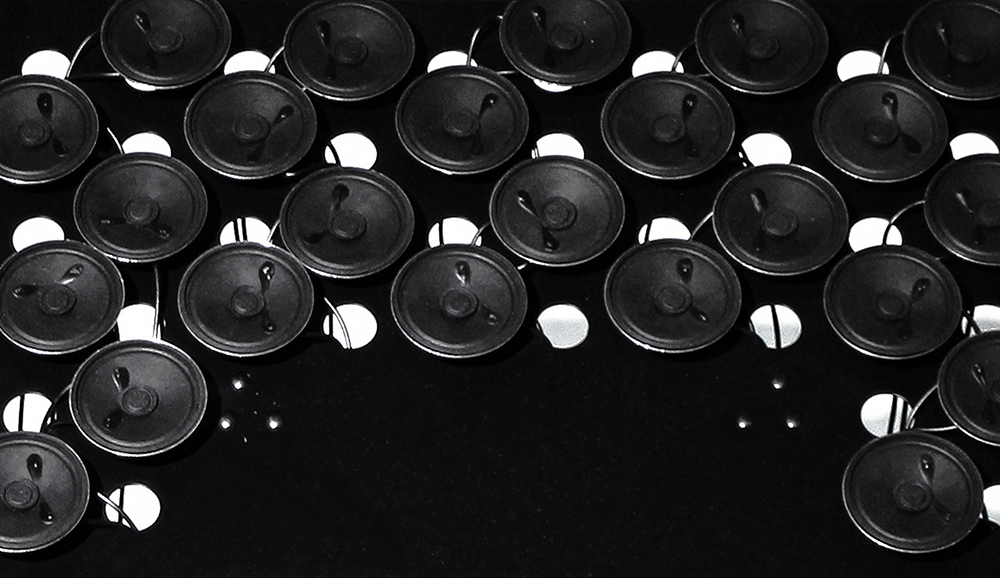
Poetry Machine / Music stand, speakers, distance sensor, DIY mp3
Poetry Machine / Music stand, speakers, distance sensor, DIY mp3 / Berlin Institut for Culture Inquiry / 2013
Poetry Machine / audio&video documentation / Berlin Institut for Culture Inquiry / 2013


